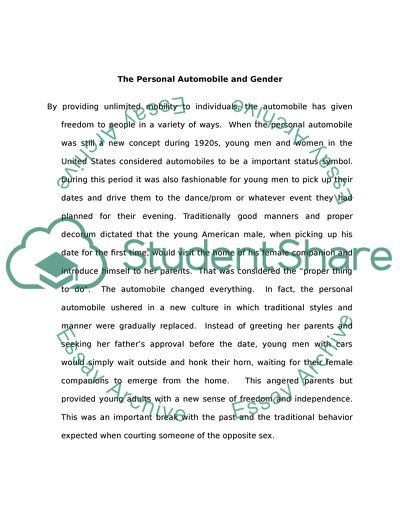Cite this document
(Gender and the Automobile in the United States Term Paper, n.d.)
Gender and the Automobile in the United States Term Paper. Retrieved from https://studentshare.org/social-science/1723103-driving-a-car
Gender and the Automobile in the United States Term Paper. Retrieved from https://studentshare.org/social-science/1723103-driving-a-car
(Gender and the Automobile in the United States Term Paper)
Gender and the Automobile in the United States Term Paper. https://studentshare.org/social-science/1723103-driving-a-car.
Gender and the Automobile in the United States Term Paper. https://studentshare.org/social-science/1723103-driving-a-car.
“Gender and the Automobile in the United States Term Paper”, n.d. https://studentshare.org/social-science/1723103-driving-a-car.


